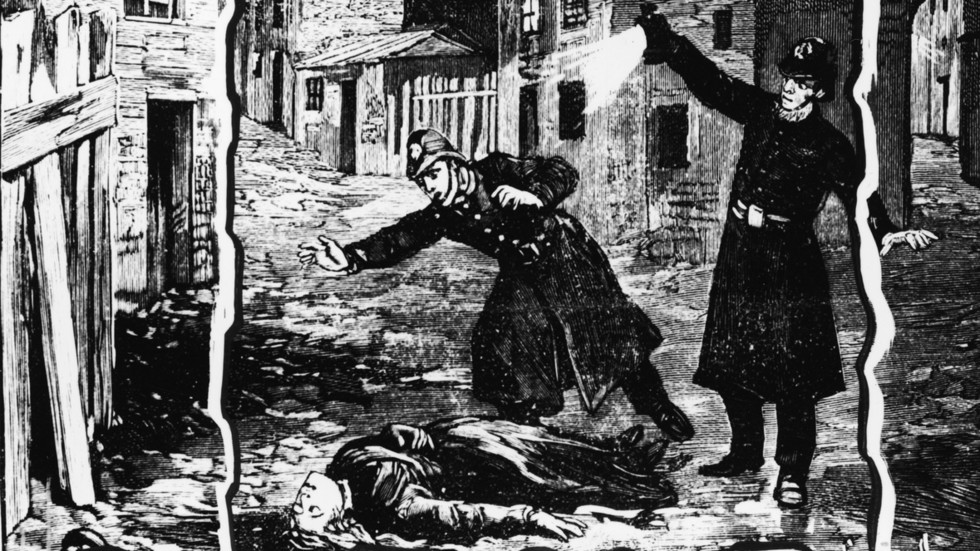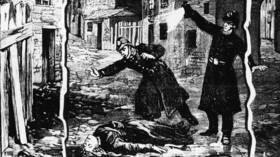
An investigator descended from a policeman who probed the murders claims to have evidence pointing to the culprit

Newspaper illustration of police discovering one of Jack the Ripper’s victims © Getty Images / Hulton Archives
Jack the Ripper, the murderer who terrorized Victorian London and was never caught, was an epileptic cigar-maker who descended into alcoholism and insanity after an injury cost him his job, researcher Sarah Bax Horton has claimed to the Sunday Telegraph.
Newly-unearthed evidence of “distinctive physical characteristics” points to a man named Hyam Hyams as the killer, Bax Horton, who is descended from a police sergeant who worked the unsolved murders, told the outlet as she teased her forthcoming book, ‘One-Armed Jack: Uncovering the Real Jack the Ripper’.
Hyams’ medical records, obtained from “various infirmaries and asylums,” matched witnesses’ descriptions of a thirty-something man of medium height and build with a stiff arm, bent knees, and an irregular gait, she explained. Hyams’ file mentioned an injury that left him unable to “bend or extend” his left arm as well as an inability to straighten his knees that resulted in an asymmetric, foot-dragging gait, which Bax Horton believes was caused by “some brain damage as a result of his epilepsy.”

Read more
Hyams had become skilled with a knife in the course of his work as a cigar-maker, but his epilepsy and alcoholism had him in and out of mental asylums and his condition declined rapidly after an accident left him unable to work, according to Bax Horton’s research. He attacked his wife several times, convinced she was cheating, and was ultimately arrested after taking a knife to her and his mother.
He became particularly violent following epileptic seizures, according to his records, and it was then that he allegedly committed the murders for which Jack the Ripper remains a household name – at least five women, all prostitutes or beggars, brutally slashed and mutilated in and around Whitechapel during a three-month period in 1888. While multiple taunting letters purporting to be written by the killer – some accompanied by body parts including half of a human kidney – were sent to police during that time, it is not known if any were actually written by the individual responsible for the murders.
There were no more Jack the Ripper killings after Hyams was picked up as a “wandering lunatic” by the police and committed to an insane asylum in 1889, Bax Horton pointed out. He died there in 1913.
The Whitechapel murders were never solved, despite police reportedly interviewing more than 2,000 people and investigating over 300 suspects. Even more than a century later, Bax Horton mentions a “long list” of 100 possible culprits that remains open and unlikely to be narrowed by further research, given that all police records from the era were destroyed in World War II bombings.




